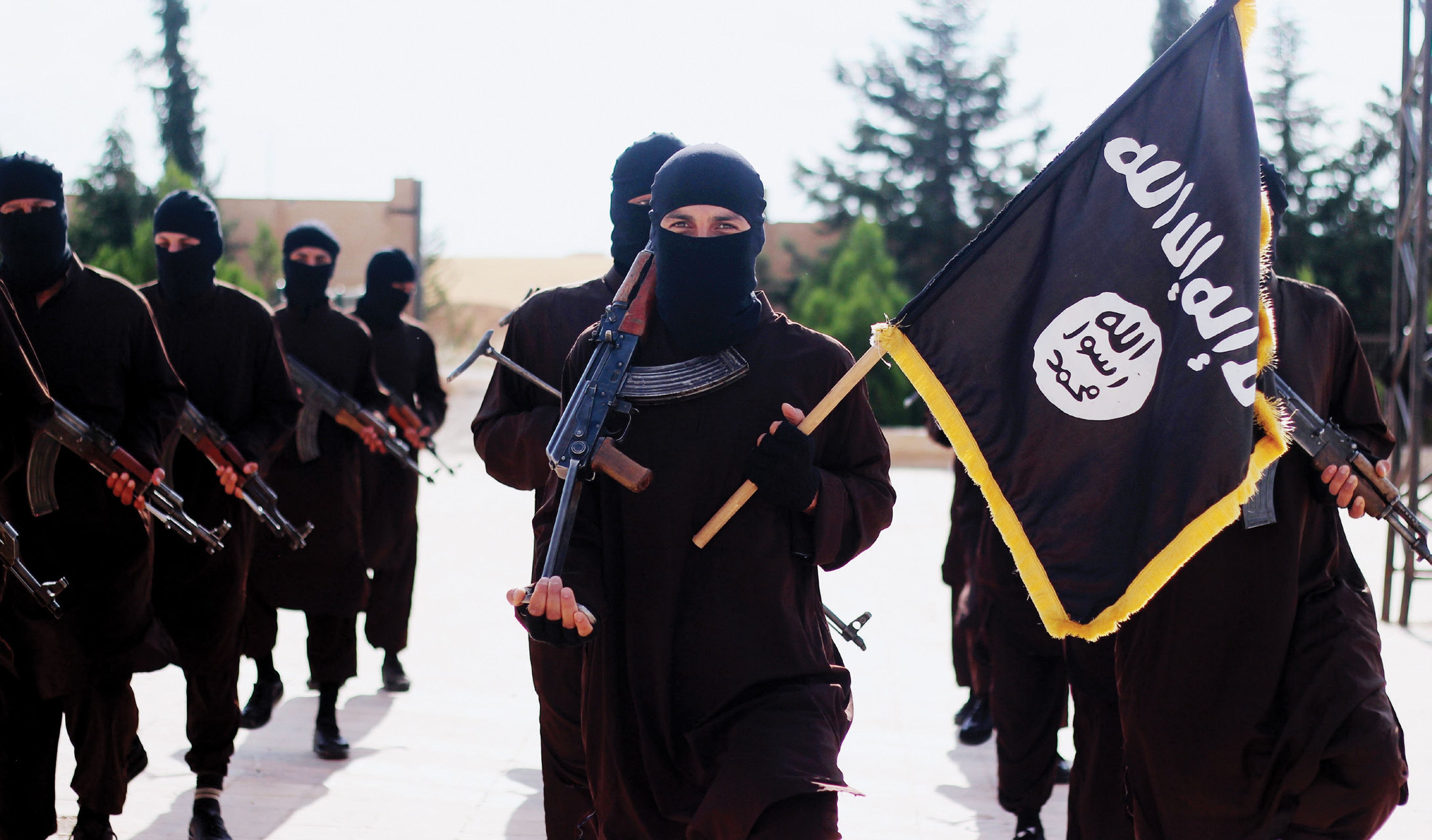Prospects for a Revival of ISIS

New Modus Operandi
fter five years of maintaining a quasi-state in Iraq and Syria, the ISIS “caliphate” had been all but destroyed by March 2019. The group lost control of the territory, most sources of income, and then its top leaders. On 7 October 2019, U.S. special forces killed ISIS leader Abu Bakr al-Baghdadi, and the next day, ISIS’ spokesman and al-Baghdadi’s successor, Abu al-Hassan al-Muhajir. The leader of ISIS in northern Iraq, Iraqi Turkmen Amir Mohammed Abdul Rahman al-Mawli al-Salbi, became the new global leader.
ISIS lost the ability to conduct regular military operations and adopted the strategy of tactical withdrawal, which assumes adaptation to new conditions and intensification of asymmetrical activities, both terrorist and insurgent. The group has maintained operational capacity and poses a permanent threat in the region. The main theatre of ISIS activities is composed of northeastern Syria (Deyr ez-Zor, Hasaka, and Raqqa provinces) and northwestern Iraq (Diyala, Ninevah, Anbar). In this area, ISIS has leadership, military field structures (more than 15,000 fighters), and financial reserves (about $300 million), which, although significantly lower than a few years ago, ensure the liquidity of operations of an organisation that generates lower costs after losing territory.
ISIS’s priority is to rebuild its structures and strengthen combat units and administrative facilities while securing further sources of financing. With the inflow of foreign fighters blocked, the only way to recruit volunteers is to free ISIS militants from prisons in Syria and Iraq. Only after strengthening its local cells will ISIS be able to gain new foreign recruits.
Situation in Syria and Iraq
ISIS in Syria is taking measures against the forces of the Bashar al-Assad regime as well as other military groups (including Russian troops, Shiite militias, and the Syrian Democratic Forces, or SDF). ISIS exploits instability in northern Syria resulting from the Turkish aggression, SDF clashes with Turkish troops, and the U.S. military withdrawal—in 2019, it carried out more than 800 terrorist attacks in Syria.
The clashes with Turkish forces weaken the SDF’s ability to control prisons with ISIS prisoners. This creates a threat of intensified attacks and escapes and so far, several hundred prisoners have escaped. In northern Syria, there are seven makeshift prisons for ISIS supporters, five under the control of the SDF (Ain Issa, Dashisha, Derik, Al-Hasaka, Qamishli) and two in Turkey’s so-called “security zone” (Kobane, Tal Abyad). About 11,000 people total are imprisoned in them, including about 2,000 foreign fighters from more than 50 countries, which are reluctant to repatriate them. The SDF also controls more than a dozen camps for displaced people as a result of the conflict and also for the militant’s families (Al-Hawl, Ain Issa, Dashisha, Derik, Qamishli, Kobane, Al-Hasaka)—70,000 children and women, some of whom have declared allegiance to ISIS. The largest of them is Al-Hawl (more than 50,000 people). ISIS infiltrates these centres, organising internal cells and even religious police on their premises. Difficulties in providing decent conditions for the detainees strengthen the potential for their radicalisation and ISIS influence.
The group seeks to use the internal destabilisation of Iraq (U.S.-Iran rivalry, protests, ethnic conflicts) to intensify its activities. Although ISIS activity in Iraq is hampered in regions controlled by the Iraqi authorities and militias—People’s Mobilisation Force (in the central and southern parts of the country)—or Iraqi Kurdistan, the number of ISIS attacks in central Iraq was increasing at the end of 2019. ISIS alone carried out more than 700 attacks in Iraq in 2019.
In Iraq, there are probably several thousand ISIS supporters in more than 30 prisons (the government does not provide the exact number) who are potential recruits. Prisons with ISIS supporters in Iraq are, however, more controlled than the centres in northern Syria, which makes it difficult for ISIS to try to free them.
ISIS around the World
The group has several branches around the world and has expanded its range (e.g., in 2019, new branches were established in Mozambique and the Democratic Republic of Congo). ISIS control of territory (“provinces”)—although this activity has decreased since the collapse of the “caliphate”—has helped the group present itself as a global organisation, increase the scope of its propaganda, and constantly recruit foreign fighters, allowing it to seemingly rotate between conflicts. The possibilities of ISIS activity outside Syria and Iraq are, however, limited by the presence of its rival Al-Qaeda, which competes with ISIS for spheres of influence and opportunities to attract new supporters.
Some ISIS fighters after the fall of the “caliphate” took part in other conflicts in the region (e.g., Yemen, Libya), joined the ranks of other branches or other terrorist groups (e.g., in Central Asia or Africa), or sought shelter in other parts of the world—in November 2019, Ukrainian services detained two ISIS commanders, including Georgian Al-Bara Shishani.
ISIS continues to conduct propaganda activities aimed at radicalising supporters in their home countries and prompting them to carrying out terrorist attacks outside the main conflict areas, In Europe and the U.S., where ISIS has limited operational instruments because it has no active branches there, the radicalisation of inhabitants of these countries and perpetrated attacks are the most valuable instrument of action. According to Europol, although the number of terrorist attacks in the EU fell from 205 in 2017 to 129 in 2018 (several foiled terrorist attacks in Europe in 2018 involved European citizens who were inspired by ISIS ideology but had never been to Syria or Iraq).
Conclusions
ISIS has the structures and financial resources to conduct guerrilla warfare and terrorist activities in Syria and Iraq. The group’s effectiveness is increased by the population’s radicalisation in the region, long-lasting military operations, the inefficiency of state administration, poor economic situation, and ethnic tensions.
ISIS will not be able to recreate its territorial “caliphate” from 2014-2016 given the presence of numerous armed groups in the area (including those connected to external actors such as Russia and Iran). However, ISIS will develop its capacity to conduct protracted asymmetrical conflict with the Iraqi authorities and the armed forces in Syria, provoking instability in these countries. ISIS’s focus on local goals will not lower the terrorist threat in other parts of the world, however, especially in Europe, where attacks are attractive in terms of propaganda because the group’s parallel goal will remain the radicalisation of supporters in their home countries.
The withdrawal of U.S. troops from northern Syria has a negative impact on the security situation in the region because it weakens the Americans’ logistics base in the fight against ISIS. The escalation of the rivalry between the U.S. and Iran on Iraqi territory, the suspension of the anti-terrorist coalition`s activities, and the relocation of troops from Iraq by some coalition members further reduces the ability of the U.S. forces and their allies to conduct effective actions against ISIS and cooperation with Iraqi forces.
The maintenance of international cooperation in the fight against ISIS is necessary to prevent the long-term revival of its organisational structures in Syria and Iraq and to effectively combat its branches in other parts of the world. The key challenge for the international community is the adoption of effective policies towards ISIS supporters and their families detained in Syria and Iraq, and their de-radicalisation. To date, only eight countries of origin have decided to repatriate fighters, which leads to a deteriorating humanitarian situation in the detention centres in Syria and Iraq, escapes, and reinvigoration of ISIS structures.


